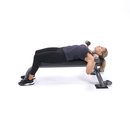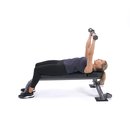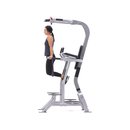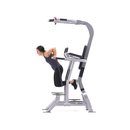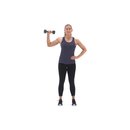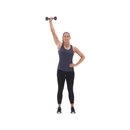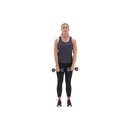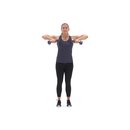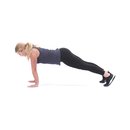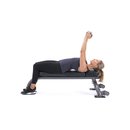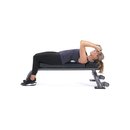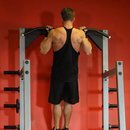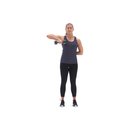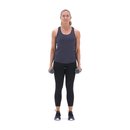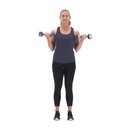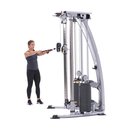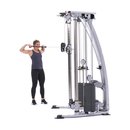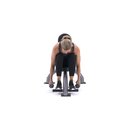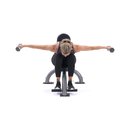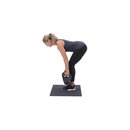Gorgeous gams and a bodacious booty aren't the only prizes you can win with a great workout program. Women from every corner of the gym impress followers with their upper bodies, whether it be a bikini competitor like Ms. Bikini Olympia, a powerlifter like Meg Squats, or a weightlifter like Mattie Rogers. Enviable biceps and rockin' shoulders round out a solid physique—and win medals.
It's no joke. To build a better-looking, stronger, healthier body, you need to work ALL the muscle groups. This includes upper-body workouts, whether you're a man or woman. And we're talking more than just a couple arm workouts a month or throwing in 3-pound dumbbell lateral raises every now and then.
Beauty and the Bulk
"Don't lift or you'll get bulky" is probably the most annoying and inaccurate comment made to females in the gym. Don't fall for it! Women's hormones and physiology are what ultimately determine our strength and muscular development, and we don't possess the same size muscle fibers or amount of lean tissue as males.
In fact, women only have on average roughly one-tenth the testosterone that men do. Women with higher testosterone levels relative to other women may tend to develop more muscle at a faster rate, but all women can train their upper body without turning into Hulkettes. Plus, you're not a professional bodybuilder. You don't have to worry about looking like one.
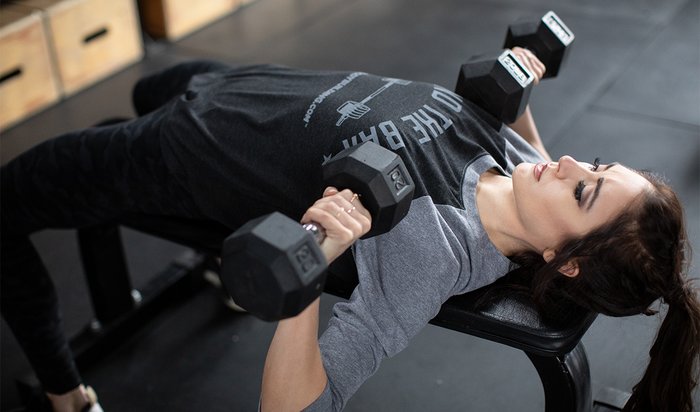
To enhance your physique and create that athletic shape many women crave, you need to build your back, biceps, triceps, and delts! Size aside, the benefits of upper-body resistance training are numerous.
1. Bone Modeling
Bone modeling and remodeling is the process by which bone adapts to load by changing size and shape and removing weak or damaged bone tissue. When muscles contract against bone, it creates stress that causes bones to strengthen against the contractions.[1] The stronger your muscles get, the stronger your bones must become to handle muscle contractions. Bone modeling helps prevent fractures and reduces your chances of getting osteoporosis.
2. Connective Tissue
Ligaments, tendons, and cartilage hold your bones together. These joints are at risk of injury when they become unstable.[2] Upper-body resistance training strengthens connective tissue in the elbows, shoulders, neck, spine, wrists, and hands. This improves joint integrity, stability, and helps prevent injury.
3. Muscle Growth and Fat Loss
Strength exercises increase lean body mass while decreasing fat stores. The greater your proportion of lean mass to fat mass, the more metabolically active your body becomes. A metabolically active body will have increased metabolic rate, fat oxidation, and energy consumption in the form of calories.[3] That means you burn more calories and fat simply by carrying more muscle!
4. More Moxie
All things considered, having a strong, shapely upper body improves self-esteem and puts you in the ultimate badass category. In a study published in the American Journal of Health Promotion, researchers found that women who participated in resistance training three days per week improved their body image more than women who walked three days per week.[4] Don't get me wrong, walking is great, too. But being strong uniquely empowers both your mind and your body.
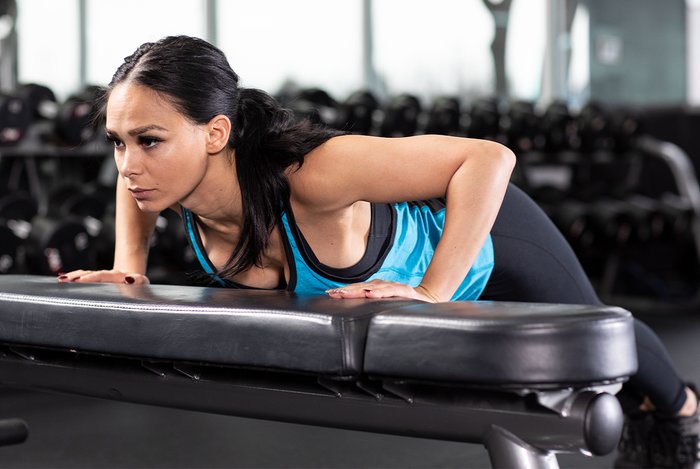
5. The Ability to Kick Ass Every Day
Though we like to associate strength with lifting in the gym, a powerful upper body makes everyday tasks that much simpler. You can rearrange your living room furniture without help, carry all your grocery bags in one trip, move boxes without getting a backache, and so much more! Being strong not only feels great, it grants you independence so you can take on bigger daily challenges with ease.
The Get-More-Awesome Plan
Time to get down to work! These upper-body workouts are broken down into push and pull sequences, and they are split so that you train your chest, shoulders, and arms equally during the week.
For Workout A, concentrate on pushing via chest, triceps, or shoulder exercises. These moves use the pectoral muscles or deltoids as primary movers while relying on the trapezius muscles and triceps for assistance.
For Workout B, perform pulling movements such as rowing. These moves involve the large network of muscles in our back, including the trapezius and rhomboids at the top, the latissimus dorsi in the center, and the erector spinae that run down to the bottom. The biceps are secondary movers in rows, and curl variations are also categorized as pull exercises.
Now that you understand the basic layout of these workouts, I recommend performing them each once per week, three days apart, for 4-6 weeks. You can work in lower-body days between them. Now go pick up those dumbbells and barbells!
If you're looking for a complete plan that includes regular upper-body work, check out LiveFit by Jamie Eason in Bodybuilding.com BodyFit Elite. This 12-week plan will help you lose weight, build shapely muscle, and get fit for life!
References
- Seeman, E. (2009). Bone Modeling and Remodeling. Critical Reviews in Eukaryotic Gene Expression, 19(3), 219-233.
- Stone, M. (1988). Implications for connective tissue and bone alterations resulting from resistance exercise training. Medicine & Science in Sports & Exercise, 20(5 Suppl), S162-S168.
- Heijden, G., Wang, Z., Chu, Z., Toffolo, G., Manesso, E., Sauer, P., & Sunehag, A. (2010). Strength Exercise Improves Muscle Mass and Hepatic Insulin Sensitivity in Obese Youth. Medicine & Science in Sports & Exercise, 42(11), 1973-1980.
- Tucker, L., & Mortell, R. (1993). Comparison of the Effects of Walking and Weight Training Programs on Body Image in Middle-Aged Women: An Experimental Study. American Journal of Health Promotion, 8(1), 34-42.


